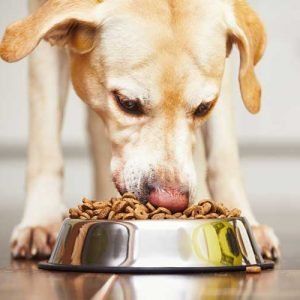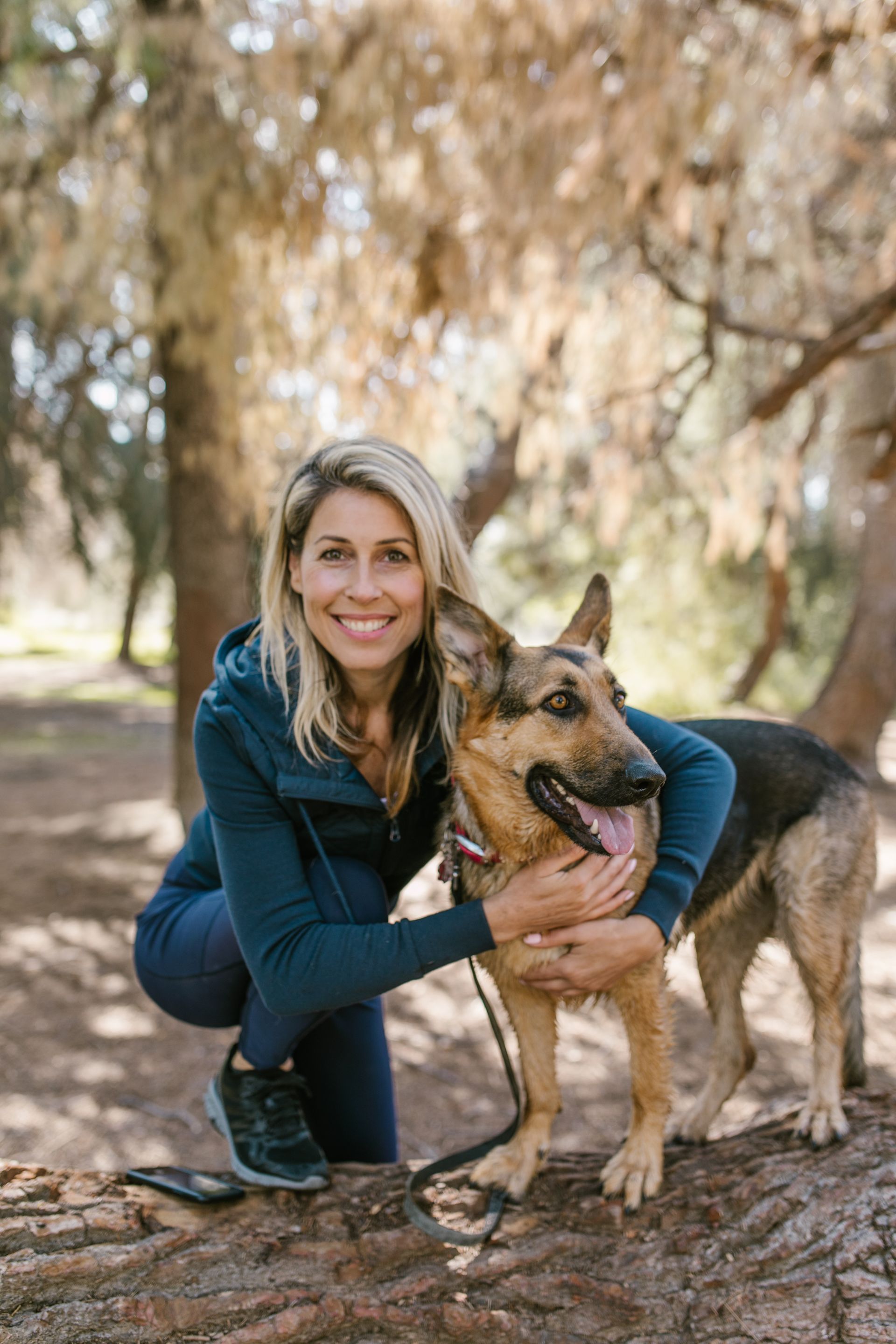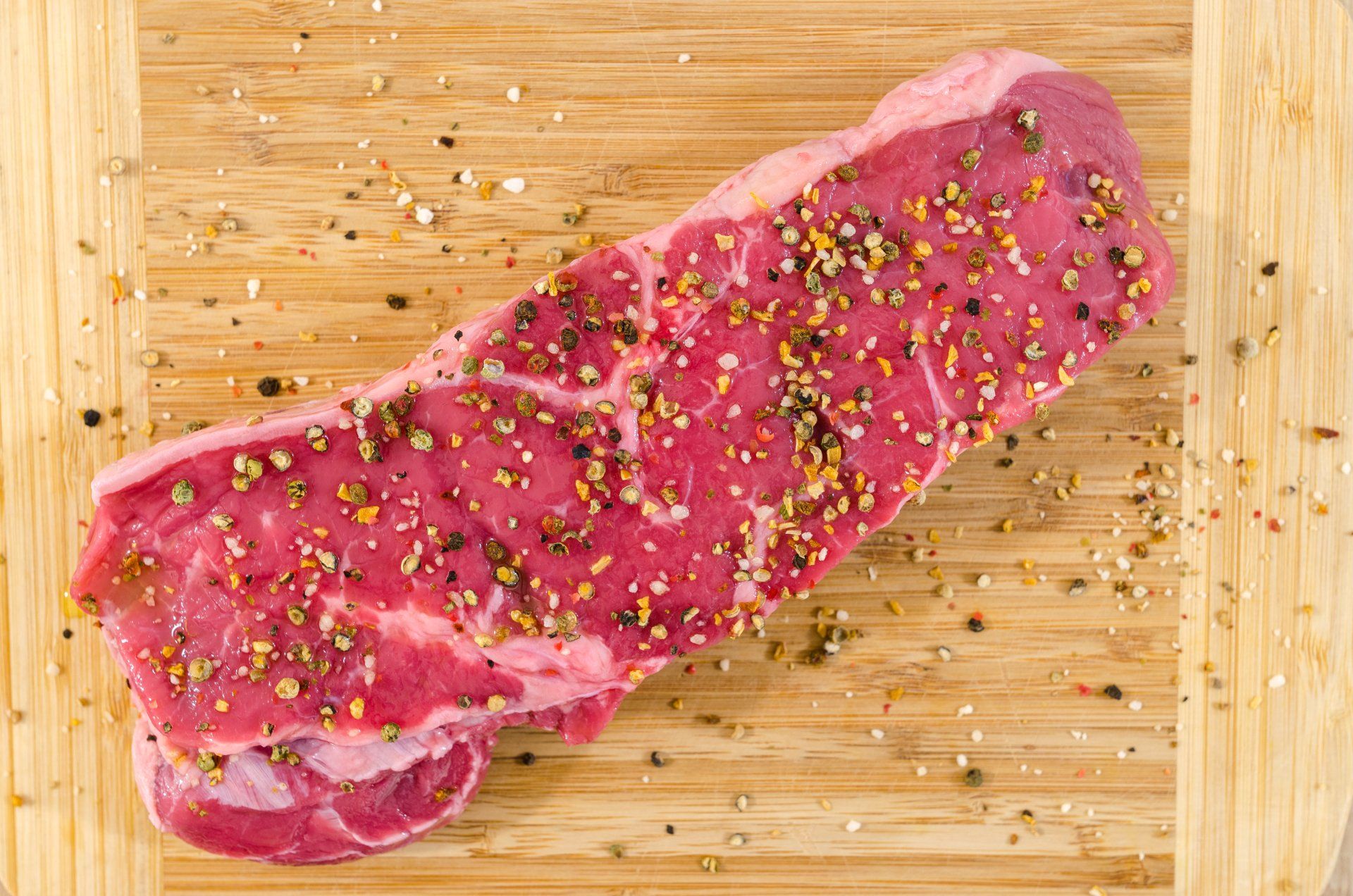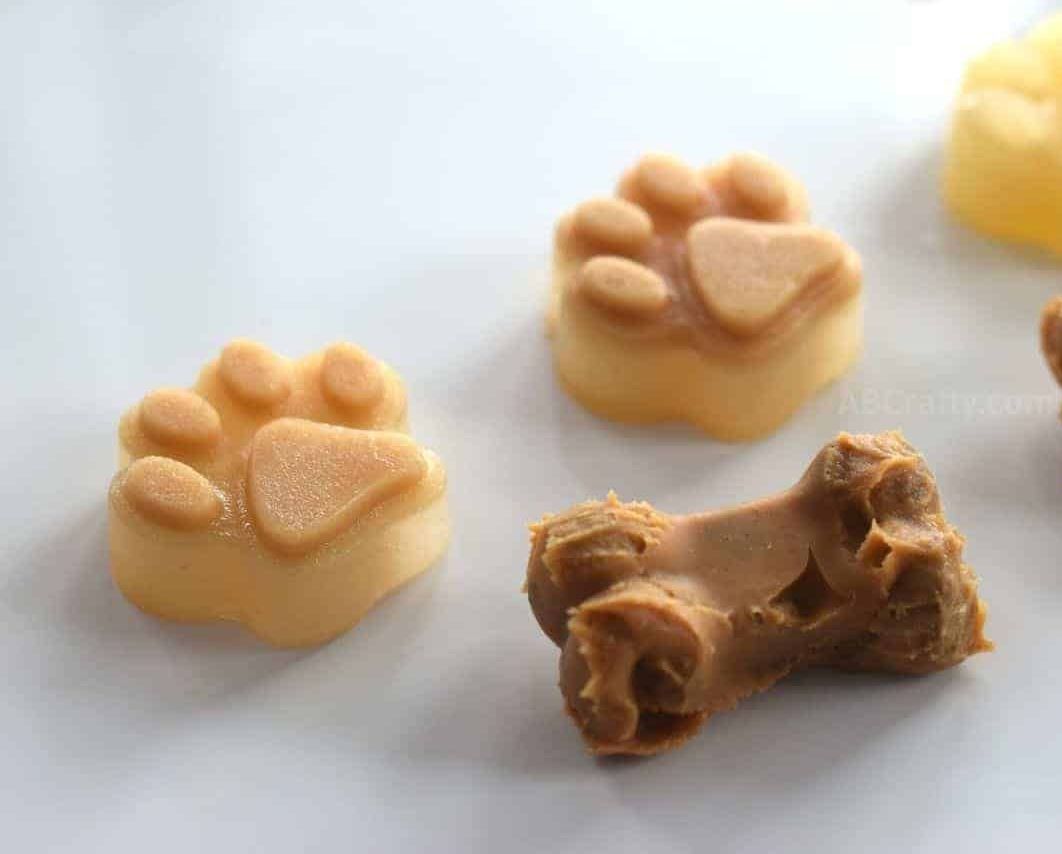AN INSIDER’S GUIDE TO FINDING SUPERIOR DOG FOOD BRANDS
AN INSIDER’S GUIDE TO FINDING SUPERIOR DOG FOOD BRANDS

These days, there are lots of dog foods on the market. So, finding a good one can be overwhelming. After all, on The Dog Food Advisor website alone, there are now:
- Over 950 dog food reviews
- Hundreds of product lines
- More than 4,100 recipes
So, how can you find a good brand? Here are 9 tips to help you find a superior food for your dog.
Tip #1: Check the Label
Pet food labels are loaded with lots of valuable information. Yet they can also be difficult to read. So, save yourself a lot of time and effort and favor dog food brands that include multiple product lines with higher ratings.
That’s because lower rated recipes are more likely to contain:
- Less meat
- More by-products
- Controversial preservatives
- Anonymous meat ingredients
Tip #2: Consider the Company
Many dog owners tend to distrust larger pet food companies. They mistakenly believe smaller brands are more likely to make better and safer products. However, the facts tell a different story.
Consider this: 93% of all pet foods sold in the U.S. are produced by just 3 companies — Big Heart, Mars and Purina.1 Yet 73 of the 88 recall events documented on this website during a recent 5-year period2 are linked to products of smaller brands.3
In other words…
Even though smaller companies account for just 7% of the pet food and treats sold — they’re responsible for an eye-popping 83% of the recalls.
In addition, after conducting hundreds of interviews, it’s become apparent that…
A significant number of dog foods are not likely to meet the claims of nutritional adequacy printed on their labels.
That’s because many smaller companies have willingly admitted to us that they make no effort to verify the nutrient content or the safety of the foods they sell.
And there’s no law requiring any pet food company to do so, either.
The truth is, the smaller the brand, the less likely the company has the financial ability to perform all the steps needed to ensure the quality of its products.
So, although there are always exceptions, it’s important to keep in mind that larger companies are far more likely to:
- Employ real food scientists, animal nutritionists and other veterinary professionals to design their products
- Test raw materials for impurities and nutrient content
- Conduct regular safety and quality control procedures
- Own and operate their own manufacturing facilities
- Verify finished goods before they are shipped
- Maintain in-house testing laboratories
So, what should you do? Are dog foods made by larger companies better?
No, larger companies may or may not be better. However…
The smaller the dog food brand, the more critical it is for you to look beyond its label.
Tip #3: Identify the Manufacturer
Most dog owners assume their pet food company actually makes the products they sell. However, today, many companies use third-party co-packers to manufacture some — or all — of their foods. Yet others make their own. In any case, whether or not a company makes its own dog food is neither good or bad. What’s more important is to know the identity of the manufacturer of any brand you feed your pet. Otherwise you’ll never be able to track its recall history or judge the safety of its products.
Tip #4: Question Product Design
What may surprise you is that there’s no legal requirement that a pet food be formulated by an animal nutritionist or any other veterinary professional. In fact, over the years, we’ve uncovered a shocking number of dog foods that have been designed by amateurs.
So, to ensure the nutritional health of your pet, you should contact each brand you’re considering and determine who actually designs its products.
By the way, just knowing who formulates a product is not enough. You’ll also want to know what qualifies that person to do so.
Tip #5: Confirm Nutrient Testing
It’s also important to know how the company can be certain each formulation is nutritionally complete and balanced. And how often nutritional content testing is actually performed. Does the company conduct laboratory analysis? Or do they run feeding trials? Surprisingly, we have found many (mostly smaller) companies that never do any testing at all. That’s why it’s so important to find out what a company does to test each product to be sure it actually meets AAFCO nutritional guidelines.
Tip #6: Investigate Ingredient Sources
No dog food can ever be magically better than the ingredients that were used to make it. Yet labels reveal little about the quality of the raw materials actually used to make the food. Some ingredients are purchased from commodity brokers on the open market — from the cheapest bidder. Others can come from countries known to have inferior food quality standards. However, superior companies tend to source their ingredients only from established local or regional suppliers they do business with on a recurring basis.
What’s more, Federal law does not currently require any pet food company to disclose country of origin — or any other sourcing information — on its label. That’s why it’s so important to know the source of all ingredients that are used to make any dog food you buy. Avoid brands that will not share this information with you.
By the way, imported ingredients aren’t necessarily bad. In fact, many can be of exceptional quality. For example, some vitamin and mineral supplements are pharmaceutical grade and can actually be superior to those sourced from the U.S. or Canada.
Tip #7: Demand Transparency
Some pet food companies work hard to conceal critical information about their products. For example, we’ve actually stumbled upon a number of companies that attempt to create an artificial sense of customer support by using voice mail to take messages. Yet no one ever returns the calls. Some brands don’t even maintain a product website.
And others resist being questioned by independent websites like The Dog Food Advisor.
These companies make it difficult (or impossible) for us to get important answers — while blaming their own unwillingness to cooperate on the fact we are not veterinarians.
Think about it. Are there any questions presented in this article that would require the knowledge of a veterinarian to answer?
Obviously, hostile or defensive companies like these are the ones that most likely have something to hide — and should not be trusted.
For all these reasons…
Never buy any dog food made by any company that is not transparent about its products or its manufacturing practices.
After all, you have a right to know.
Tip #8: Verify Quality Control
At the time of purchase, all pet foods are at risk for containing:
- Disease-causing pathogens (Salmonella, Listeria)
- Mold toxins (aflatoxin, vomitoxin)
- Environmental pollutants
- Unsafe nutrient levels
And although many pathogens can be killed (pasteurized) during cooking, deadly toxins can remain in the food throughout the manufacturing process.
What’s worse, re-contamination can occur anytime living germs from uncooked food accidentally come in contact with a finished food product. That’s why you must never buy a pet food from any company that ships finished goods before obtaining negative test results for any form of contamination.
Some companies are more diligent about this safety measure than others. A few test every batch while others test only randomly. And yet some never test anything at all. In any case, even for us, it can be extremely difficult to determine just how carefully any brand administers its own quality control program.
Tip #9: Study the Recall History
Dog food recalls can provide some valuable clues about a brand’s manufacturing habits. Pet owners tend to misunderstand and overreact to dog food recalls. And they’re inclined to overvalue the real significance of these events whenever they occur. They forget that when it comes to any process involving human beings, errors are inevitable. Accidents are going to happen.
And that’s what makes dog food recalls so unpredictable. In fact, trying to forecast any pet (or human) food recall has proved to be impossible. Just the same, even though no pet food company can completely prevent a recall, it can control how it responds to such an event when it does occur.
Unfortunately, while some companies work hard to prevent a recall, others work even harder at covering them up. For example, some misguided brands have been known to conduct silent recalls — informing only their distributors about an event. And not the public.
Or they withhold the news about a recall and only release that information at the very end of the business week — just so they won’t have to deal with consumer questions.
Avoid buying dog food made by any brand that makes any attempt to hide recall events from the public when they occur.
Remember, most recalls typically involve only a limited number of product runs and batches. Just because a particular recipe has been recalled doesn’t mean the entire brand is defective.
So, please don’t make the same mistake made by so many other well-meaning pet owners. Don’t overreact and exclude a quality food just because of a few isolated events.
In the end, your dog could be missing out on some of the very best canine diets out there.
The Bottom Line
Of course, no system can possibly guarantee your dog’s food will never be recalled — or that your pet will approve of your choice.
However, any time you find a product that meets the majority of these guidelines, you can feel confident you’re likely to have found a superior dog food brand.
(Source: The Dog Food Advisor)

Summertime means outdoor adventures for you and your furry friend. But lurking in those tall grasses is a tiny, yet potentially dangerous threat: grass seeds. These seemingly harmless little things can cause a world of trouble for your dog if not caught and removed promptly. How Grass Seeds Can Harm Your Dog Grass seeds are designed to stick, and they do just that to your dog's fur, paws, and even ears. Once embedded, they can cause a range of problems: Skin irritation: Grass seeds can cause redness, itching, and discomfort when lodged in your dog's fur or between their toes. Infection: If a grass seed penetrates the skin, it can carry bacteria, leading to painful and swollen infections. Serious complications: In rare but severe cases, grass seeds can migrate to other parts of the body, causing internal damage. Signs to Watch For Be on the lookout for these signs that your dog may have a grass seed problem: Excessive licking or chewing of paws Head shaking or tilting Pawing at the face Redness or swelling around the eyes or ears Discharge from the eyes or ears Lethargy or loss of appetite Preventing and Removing Grass Seeds Prevention is key to keeping your dog safe from grass seeds: Avoid walking your dog in tall grass, especially during dry weather when seeds are more likely to spread. Regularly check your dog's fur, ears, and paws for any signs of grass seeds. Trim the hair around your dog's paws and ears to reduce the risk of seeds getting caught. If you find a grass seed, try to remove it carefully with tweezers. If you can't easily remove the seed or if the area is red, swollen, or painful, contact your vet immediately. When to See a Vet It's important to seek professional help if: You can't remove the grass seed yourself. Your dog is showing signs of pain or discomfort. There's evidence of infection, such as redness, swelling, or pus. You suspect the grass seed has migrated to another part of the body. By taking precautions and being aware of the risks, you can help protect your furry friend from the dangers of grass seeds and ensure they enjoy a happy and healthy summer. Do you have any other questions about grass seeds or dog care?

Summer is a time for adventure, and what better way to experience the great outdoors than with your furry companion by your side? Hiking and camping trips are a fantastic way to bond with your dog, but venturing into flea and tick territory requires some extra preparation. Here's how to keep your pup safe and pest-free on your next outdoor adventure: Flea and Tick Prevention is Key Talk to your vet : Before you hit the trails, discuss flea and tick prevention with your veterinarian. They can recommend the best product for your dog based on their age, breed, and lifestyle. There are several options available, including topical medications, oral chews, and collars. Apply prevention medication : Follow the instructions on your chosen flea and tick preventative carefully. Be sure to apply it well in advance of your trip, according to the product label. Year-round protection : Many flea and tick medications offer year-round protection. This is important, even if you don't plan on spending a lot of time outdoors, as fleas and ticks can also be a problem indoors. Tick Check Time Daily examinations : Get into the habit of checking your dog for ticks every day, especially after spending time outdoors. Focus on areas like the ears, paws, armpits, and groin where ticks like to hide. Tick removal : If you find a tick on your dog, remove it promptly with a tick removal tool. Never try to pull it out with your fingers, as this can leave the mouthparts embedded in the skin. Be aware of tick-borne diseases : Lyme disease is a common concern in many areas. Talk to your vet about the risks in your area and whether a Lyme disease vaccination is recommended for your dog. Camping Considerations Choose your campsite wisely: Ticks are more prevalent in tall grass and wooded areas. If possible, set up camp in a clear, grassy area. Create a tick-free zone: Treat the campsite perimeter with an EPA-approved insect repellent safe for use around pets. Hiking Happy Trails Stick to the path : Stay on designated trails to avoid tall grass and brush where ticks are more likely to be hiding. Leave no trace: Clean up after your dog and dispose of waste properly. This helps to protect the environment and wildlife. Water, water, water: Just like you, your dog will need plenty of water to stay hydrated on a hike. Bring a portable water bowl and take frequent breaks to allow your dog to drink. By following these simple tips, you and your dog can enjoy a safe and happy adventure in the great outdoors. Remember, preparation is key! With a little planning and preventative measures, you can keep your furry friend safe from pesky fleas, ticks, and other outdoor hazards.

We all want our furry best friends to thrive, and a big part of that is ensuring they get the right fuel for their amazing bodies. But with shelves overflowing with dog food options, deciphering labels and picking the perfect protein and nutrition content can feel like cracking a doggy Da Vinci code. Fear not, fellow pet parents! This post will equip you with the knowledge to navigate the dog food aisle with confidence. Protein Power: Age Matters: Puppies are growing machines, so they need more protein (around 29%) than adult dogs (18-25%). Senior pups may also benefit from a slight protein bump to support muscle mass. Activity Level: The energetic athlete in your life? They likely burn through protein faster than a couch potato pup. Look for higher protein content (up to 30%) in active or working dog food. Source Matters: Just like for us, protein quality is key. Animal-based proteins like chicken, beef, or fish are generally more digestible and provide essential amino acids for your dog's growth and well-being. Beyond the Protein: Protein is a vital piece of the puzzle, but it's not the whole picture. Here's a quick rundown of other important nutrients: Fats: Provide energy and support healthy skin and fur. Look for balanced levels of omega-3 and omega-6 fatty acids. Carbohydrates: Fuel your dog's body and brain. Complex carbs are preferable to simple ones. Vitamins and Minerals: These micronutrients keep your dog's bodily functions running smoothly. Decoding the Label: The AAFCO (Association of American Feed Control Officials) guidelines ensure dog food meets minimum nutritional requirements. Here's what to watch for on the label: Guaranteed Analysis: This section lists the minimum percentages of protein, fat, fiber, and moisture in the food. First Ingredient: This should ideally be a named protein source, like chicken or salmon. Aesthetics: Avoid artificial colors, flavors, and preservatives. Remember: Consult Your Vet: They can recommend a food based on your dog's individual needs and any health concerns. Read Reviews: See what other pet parents have to say about different brands. Start Slow: When switching foods, gradually introduce the new one over a week to avoid tummy tr oubles. By understanding your dog's unique needs and wielding your newfound label-reading skills, you can choose a dog food that fuels their tail wags and keeps them happy and healthy for years to come. Remember, a happy pup makes a happy home! If you're still not sure, we are always willing to provide a FREE pet food consultation to help you find the right fit for your pet.

Spring has sprung! As the days get warmer and we spend more time outdoors with our furry friends, it's the perfect time to revamp their grooming routine. Shedding season is in full swing, and our pups need a little extra TLC to keep them looking and feeling their best. Here are some tips, tricks, and essentials to transform your dog from winter wooly bear to a sprightly spring pup! Brushing Bonanza: Brush, brush, brush! This is the golden rule of spring grooming. Regular brushing removes loose fur, prevents matting, and distributes natural oils for a healthy coat. Choose the right brush: Short-haired breeds might benefit from a bristle brush, while long-haired pups need an undercoat rake to remove that hidden fluff. Make it a bonding experience: Turn brushing into a pampering session. Use a gentle touch and positive reinforcement with treats or praise. Bath Time Bliss: Spring clean that fur! A bath can help remove winter grime, allergens, and that "doggy odor." But be gentle! Frequent baths can strip away natural oils. Use a dog-friendly shampoo: Skip human shampoos, which can irritate your pup's skin. Opt for a gentle, dog-specific formula. Rinse thoroughly: Leaving shampoo residue can cause itchiness. Rinse, rinse, rinse! Paw and Nose Care: Pawsitively essential! Spring means more walks and hikes, so check your dog's paws regularly for cracks, cuts, or debris. Keep paw pads moisturized with a dog-safe balm. Sniffing out dryness: Cold winter winds can leave your dog's nose dry and cracked. Apply a little petroleum jelly (safe for dogs!) to keep their nose happy and healthy. Bonus Tips: Fight the fleas and ticks: Spring is prime time for these pests. Talk to your vet about flea and tick prevention medication. Freshen up their breath: Dental hygiene is important! Ask your vet about dog-safe dental chews or sprays to keep their breath minty fresh. Spring Grooming Essentials: High-quality brush or comb suitable for your dog's coat type Gentle dog shampoo and conditioner Dog-safe ear cleaner (optional) Nail clippers (optional, consult your vet if unsure) Dog-safe paw balm Flea and tick prevention medication (consult your vet) With a little extra effort, your dog will be looking and feeling their best this spring! Remember, grooming is a great opportunity to bond with your furry friend. So crank up the tunes, grab your favorite brush, and get ready for a spaw day your pup will love!









